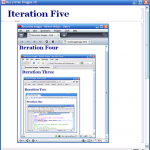Advertisement
Not a member of Pastebin yet?
Sign Up,
it unlocks many cool features!
- The End
- "The famous “war of laws” between the Russian Soviet Federative Socialist Republic (RSFSR) and the USSR was the real dagger in the heart of Gorbachev, the USSR, and the reform process. The Russian Republic comprised 75 percent of the Soviet Union’s territory, 60 percent of its production, and 50 percent of its population. For the entirety of the Soviet period, the CPSU had denied Russia the right to establish its own communist party and central committee out of fear that an autonomous, empowered leadership group in the Russian Republic would have been uniquely equipped to undermine Soviet rule. This long-standing fear was rapidly validated.
- Less than a year later in April 1991, the Russian CPD established a new post of Russian President, providing an even more autonomous center of power. In June 1991, in a free election based on direct popular vote, Yeltsin won resoundingly with 57 percent support (Ryzhkov, Gorbachev’s former premier, was next with 16.9 percent). Russia was now sovereign, declaring its right to basically everything formerly controlled by the USSR, and had its own President in direct confrontation with the USSR and its President.
- The conservative coup against Gorbachev in August 1991 was a farcical last ditch measure. Yeltsin bolstered his populist democratic persona by standing near the new Russian parliament in front of supposedly hostile military forces who never used any serious force. This gave Yeltsin carte blanche. On November 6, 1991 he issued a decree banning the Communist Party from Russian soil, dissolving its structures, prohibiting operations, and seizing its assets. Yeltsin finished what Gorbachev started. The Party was over.
- Then Yeltsin moved on to the USSR, which Gorbachev had intended to save with the new union treaty that would have been signed August 20th--devolving fiscal and other authorities to the Republics--had the coup not prevented it. Instead, Yeltsin, with the heads of the Ukrainian and Belorus Republics, simply declared the Soviet Union dissolved. Gorbachev’s power fully lost, he resigned on December 25th. The Gorbachev revolution was over."
- In summary:
- The proximate cause of the mechanistic collapse of the Soviet Union: Gorbachev’s intentional undermining and shifting of institutional power and the Russian secession it enabled under Yeltsin. Gorbachev’s reforms began with the aim of resuscitating the Soviet economy. But instead they brought ruin, destroying the economy along with Soviet state capacity. This did not occur because Gorbachev was “helpless” and trapped by entrenched interests, but rather, because he proved to be a well-intentioned reformer with great power that was used in a reckless manner.
Advertisement
Add Comment
Please, Sign In to add comment
Advertisement

